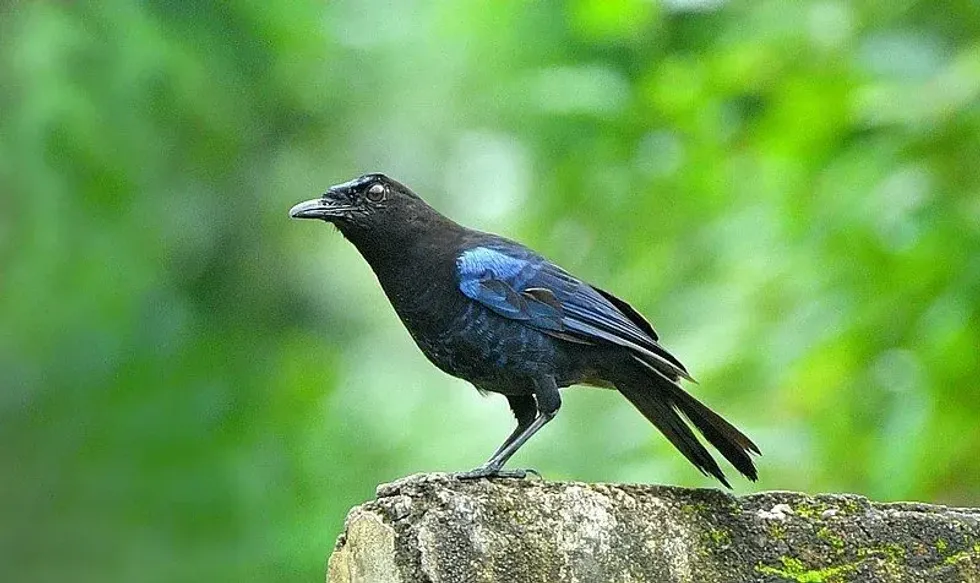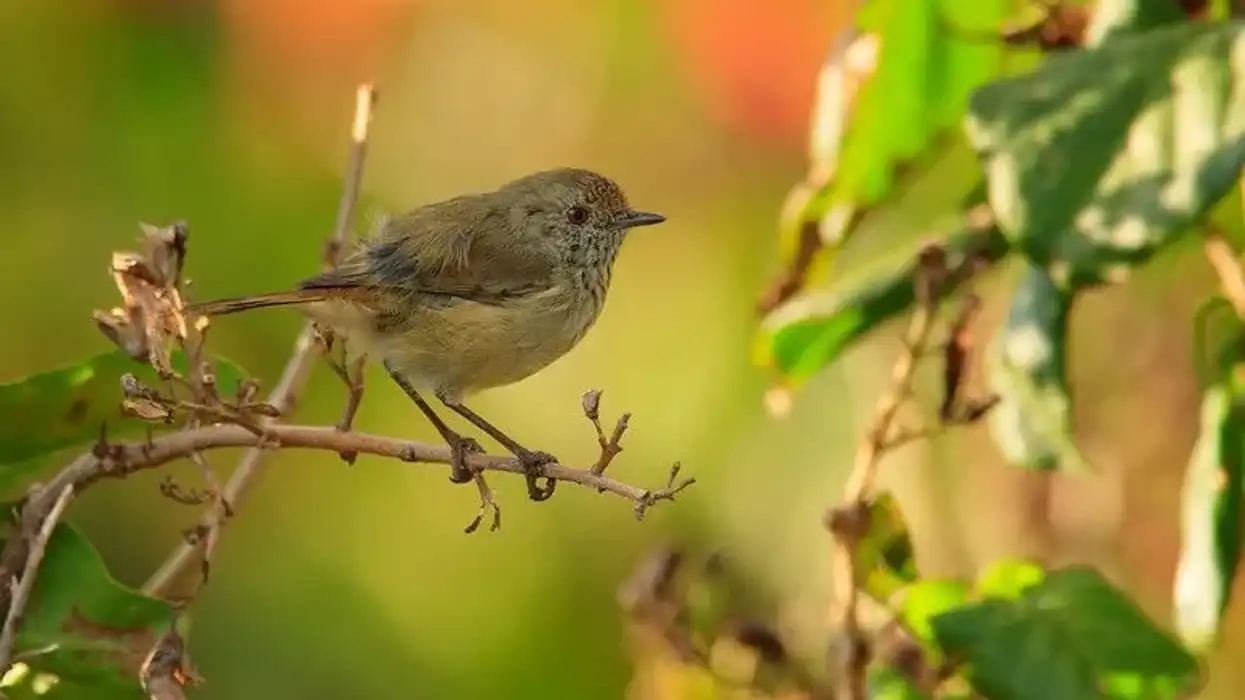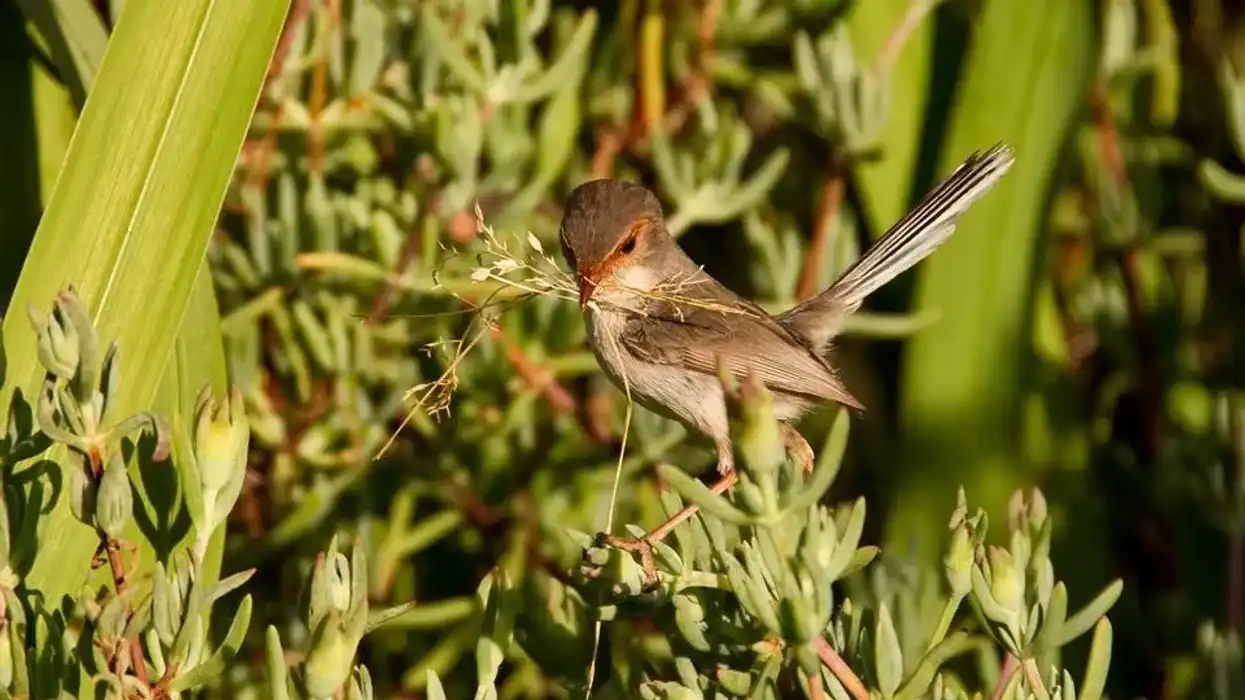Do you like learning interesting facts about various species of birds? Then give this article a read. One of India's most melodious songbirds is the Malabar whistling thrush.
The Malabar whistling thrush sound or call has a human quality and this bird makes its call at dawn. However, during the summer, this bird can sometimes be heard calling during the day.
This bird species is from the Muscicapidae family and is a resident of India. This bird has patches of blue around the shoulder and forehead. This bird is endemic to India and derives its name from the human quality of its call.
The Malabar whistling thrush is a bird native to India and is not migratory. Generally, they return to their old nest to lay their eggs and have now become accustomed to living near human settlements.
For relatable content, check out the chestnut-bellied rock-thrush and Aztec thrush.
Malabar Whistling Thrush Interesting Facts
What type of animal is a Malabar whistling thrush?
The Malabar whistling thrush is a species of bird found in eastern and southern India. During dawn, the Malabar whistling thrush makes a human-like sound and they are famous for their whistling.
What animal class does the Malabar whistling thrush belong to?
The Malabar whistling thrush belongs to the Aves or bird animal class. Additionally, this species of birds is part of the Muscicapidae family and its genus is Myophonus.
How many Malabar whistling thrushes are there in the world?
There is no exact number about the population range of the Malabar whistling thrush, but data suggests that the range of their population is decreasing due to loss of habitat.
Where does a Malabar whistling thrush live?
The Malabar whistling thrush bird lives in inland wetlands and a range of forests and is a resident of India, particularly in the the Western Ghats and parts of Maharashtra and Karnataka. The elevation range of this bird's presence is not that high, but they are mostly present in the Western Ghats.
What is a Malabar whistling thrush's habitat?
The Malabar whistling thrush is found in inland wetlands and forests. Their habitat is present in the Western Ghats, parts of the Eastern Ghats, Maharashtra, and Karnataka. They have recently been seen near human settlements. They are not migratory birds, but they do travel a short-distance during the monsoon season.
Who do Malabar whistling thrushes live with?
Malabar whistling thrush birds live alone or in pairs. They have not been seen with other species of birds.
How long does a Malabar whistling thrush live?
Not much is known about the lifecycle or lifespan of the Malabar whistling thrush bird.
How do they reproduce?
The breeding season for the Malabar whistling thrush bird begins tentatively in February and ends in August. The male tries to impress the female during the breeding season by calling and demonstrating its flight capabilities. Nests are made from bamboo roots, moss, and grass by the female and male.
Usually found in cracks in trees, the nest is round in shape. Recent discoveries have found that they nest in the cracks of abandoned buildings. There are two to four eggs in a clutch.
The female keeps a watch on the juveniles while the male hunts for food. It takes the male and female 16-17 days to incubate the eggs. The nesting period is unknown.
What is their conservation status?
The IUCN has classified the Malabar whistling thrush in the Least Concern category. The exact population of the bird is unknown, but its range has declined due to habitat loss.
Malabar Whistling Thrush Fun Facts
What do Malabar whistling thrushes look like?
From a distance, the Malabar whistling thrush bird appears blackish and monotone, but a closer inspection reveals it has a royal blue forehead band, as well as blue wings and edges. These birds that generally live singly or in pairs on the Ghats have legs and bills that are black.
Females look similar to males, except they do not have a glossy finish to their plumage. The glossy wings give them a blackish appearance. Juveniles are matte black and have glossy blue patches on their shoulders.
How cute are they?
The Malabar whistling thrush isn't really known to be cute, but rather we can admire it for its human quality call. This bird can be described as photogenic rather than cute because it appears blackish with its glossy feathers and patches of blue on its forehead and shoulders. They look quite majestic in photos.
How do they communicate?
The Malabar whistling thrush communicates with a human quality that is whistling calls. Sometimes the male and female bird will make these calls together at dawn.
They have been given the name of 'whistling schoolboy' because of their call. You can sometimes hear their call in the middle of a hot day. Additionally, this bird can be heard making a descending 'kree-ee' call while in flight.
How big is a Malabar whistling thrush?
The Malabar whistling thrush is 9.8-11.8 in (25-30 cm), compared to the blue whistling thrush which is 12–14 in (30.5–35.5 cm) and is a bit smaller even though it is a similar species of bird.
How fast can a Malabar whistling thrush fly?
Data about the flight speed of the Malabar whistling thrush has not been recorded.
How much does a Malabar whistling thrush weigh?
The weight of the Malabar whistling thrush is 3.5-4.5 oz (101-130g). They are bulkier than a wood thrush.
What are the male and female names of the species?
Male and female birds of this species have no distinct names. They are referred to as Malabar whistling thrush male and Malabar whistling thrush female.
What would you call a baby Malabar whistling thrush?
A baby Malabar whistling thrush is called a juvenile.
What do they eat?
The diet of the Malabar whistling thrush consists of earthworms, berries, aquatic insects, crabs, frogs, and snails.
Are they dangerous?
No, this bird species is not considered to be dangerous, just like the song thrush.
Would they make a good pet?
This bird species would make wonderful pets because of their call. As they are known to have a call that is soothing and melodious, they are considered to be pets. However, they are wild birds so it is best if they are allowed to fly freely in their natural habitat.
Did you know...
They are not migratory birds, but it has been recorded that they have traveled all the way to Mount Abu.
In the summer, these birds are known to take frequent baths to stay cool.
It has been recorded that they perch on trees for elevation and to scope their surroundings. The bird also forages for berries on the ground.
How is the Malabar whistling thrush different from a regular thrush?
The Malabar whistling thrush differs from a regular thrush in the following ways. First of all, a regular thrush does not have blue patches on its shoulders and forehead.
The Malabar whistling thrush, on the other hand, is a resident of India, specifically the Ghats. The regular thrush does not belong to the same family or genus as the Malabar whistling thrush.
What is the meaning of whistling thrush?
The whistling thrush is known for its clear, loud whistle, which can be heard at dawn or in the middle of the day on a hot summer day. This is the reason for this bird's name.
Here at Kidadl, we have carefully created lots of interesting family-friendly animal facts for everyone to discover! Learn more about some other birds from our dusky thrush facts and karoo thrush facts pages.
You can even occupy yourself at home by coloring in one of our free printable bird coloring pages.
Main image by Rejichandran
Second image by PJeganathan










